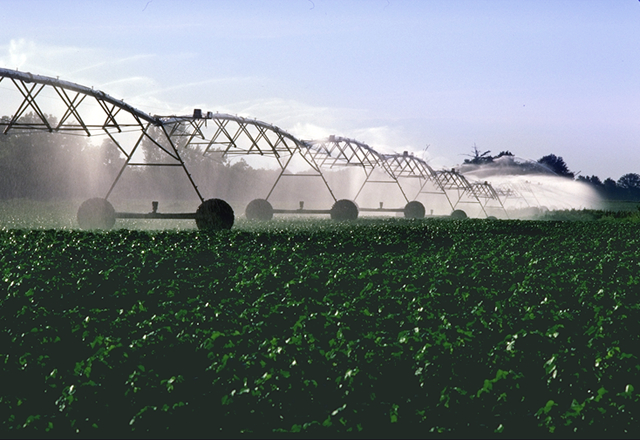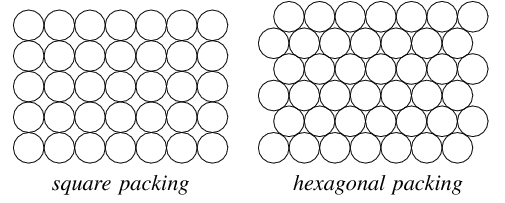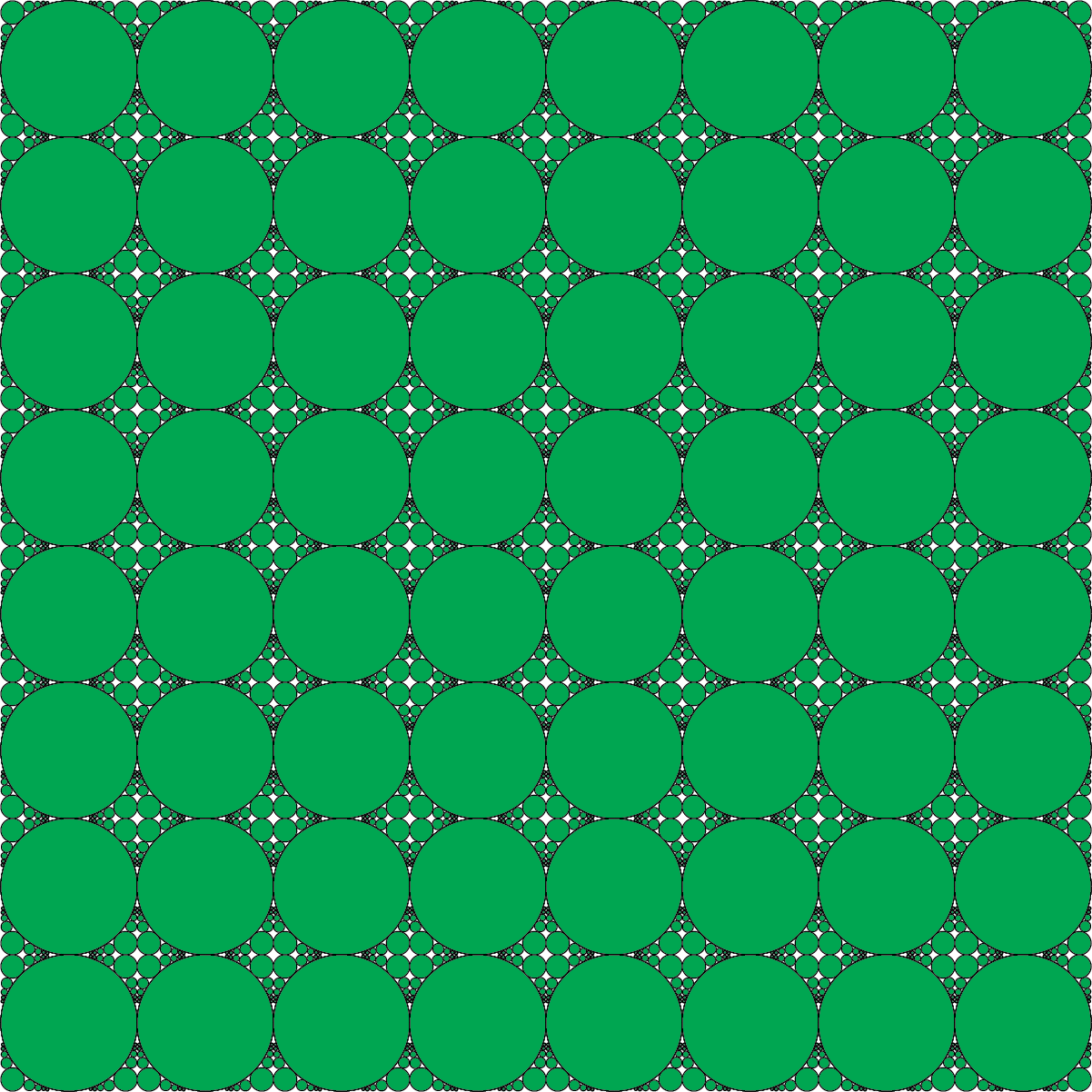Crop Circles
On a flight across North America, I glanced out of the window to admire the acres of farmland that spanned the horizon. Dusted with snow, they produced a quilted pattern of grain and corn, making me me wonder, ‘Why are the fields made up of circles within squares?’.
The circle question is easily explained by an engineering innovation from 1940, developed by the famed farmer, Frank Zybach. His invention of Center Pivot Irrigation led to more effective farming by partially automating the previously labor intensive task of plant watering. In Center Pivot Irrigation, an overhead irrigation system rotates around a central locus, carrying and spraying water down to all of the crops. The system rides upon wheels, and is generally powered by electric motors (though in its initial form, the irrigation system rotate using water power alone).

Though, the square question remains, why are these crop circles located in a square grid? This is far from the optimum pattern. Because of the square grid, the farmers are limited by the inefficiencies of the square packing grid. Assuming equal plot areas, the maximum percentage of farmable area is 78.5%. The maximum farmable area would come from a hexagonal packing pattern, allowing 90.1% of the area to be accessed by central pivot irrigation.

Why wouldn’t the farmers use a system that gives them 10% more land to use?
The answer seems to be inherently human. Humans love the simplicity of the idea of straight lines. However, these perfectly straight lines don’t truly exist in nature. They serve as a rough approximation for a variety of natural phenomenon; trees trunks, crystals, path light in a medium. But none of these examples are truly straight when critically examined.
Humans developed these square grids in order to quickly parcel out large quantities of land. But this rough rule of thumb immediately led to problems. The curvature of the earth makes it impossible to superimpose a square grid upon its surface. This fact led to plenty of issues in early surveying, especially when two parcel grids, using different solutions to this issue, would meet.
Looks like these problems continue today, an antiquated square grid is forcing these circular farms to miss out on a significant percentage of crop yield. Or maybe, the optimal solution is Circular Pivot Irrigation systems all the way down…..

Header photo © wikipedia.com 2017
Body photo © wolframalpha.com 2017
Body photo © wikipedia.com 2017
Sources: https://www.ag.ndsu.edu/irrigation/faqs
https://en.wikipedia.org/wiki/Section_(United_States_land_surveying)